
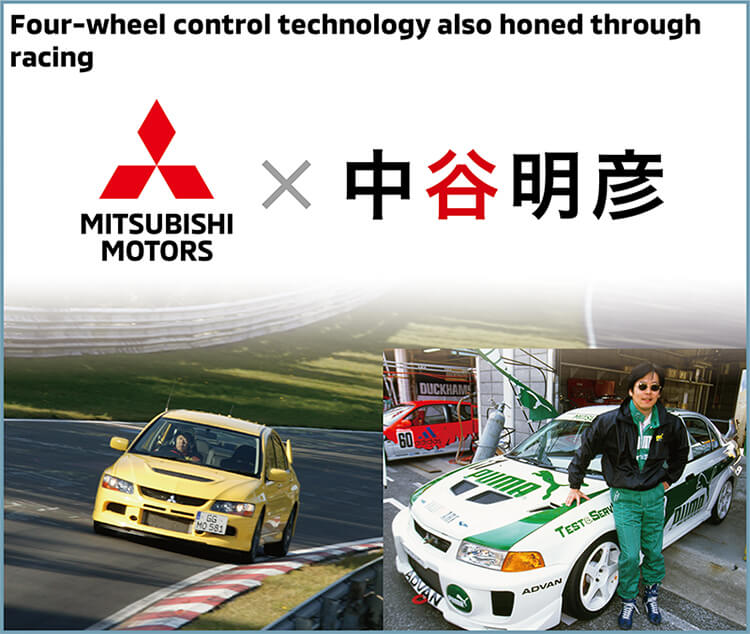
photo on the right :Super Taikyu Series champion Nakaya with the Lancer Evolution V (1998)
Racing Driver & Automotive Journalist
Akihiko Nakaya
Utilizing the 4WD technology honed in vehicles such as the Mitsubishi Jeep, Mitsubishi Motors has employed the optimal 4WD system for each type of driving application in the car categories of the times. From pickup trucks to cross country SUVs and passenger vehicles, Mitsubishi Motors has been giving drivers “cars that anyone can drive anywhere comfortably” with these systems. In addition to rigorous in-house testing for handling all types of weather and roads, motor sports were also leveraged as settings for development efforts.
Nakaya had a reign of success driving the Lancer Evolution in Japanese endurance races “Super Taikyu Series” where commercial models with minor modifications are the main vehicle class. In that team arrangement which is not a works team like those in the World Rally Championship (WRC), how did Nakaya and the developers go about refining the four-wheel control technology, and how did they come to create S-AWC (Super-All Wheel Control)?
Shaping the Next-Generation 4WD Sports Sedan
The first aim in developing the Lancer Evolution VII, the third generation of the series, was better body rigidity. It had become apparent through previous experience in car development that body rigidity was key to each of the devices and also the suspension functioning as intended. To achieve that, testing for the Lancer Evolution VII was also conducted on the old track at Nürburgring, a circuit in Germany.Nürburgring is referred to as the perfect location for vehicle development due to its grueling track layout. Nakaya reflects on his experience in testing at the time, “Nürburgring puts tremendous stress on a vehicle and lays bare everything about its performance, from the engine to the transmission, body, and chassis. The Lancer Evolution VII drove through it with poise. It did not encounter any major problems, and we refined its performance from there.” Testing on the Lancer Evolution series continued at Nürburgring after that with the Lancer Evolution X model, underpinning the evolution of the series.
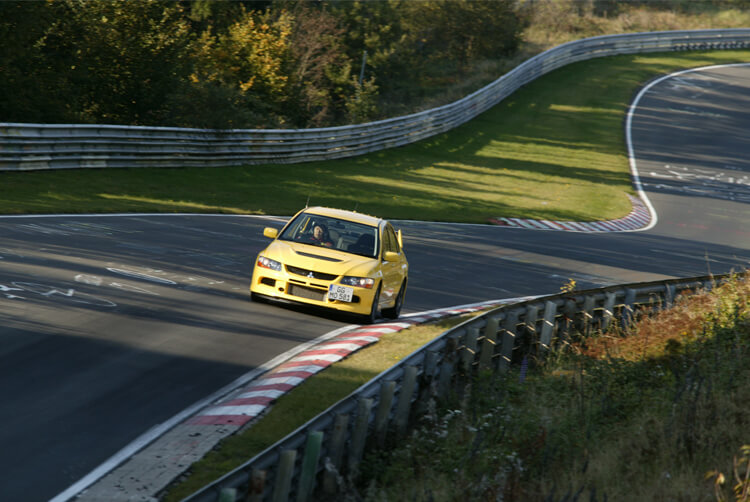
Nakaya testing the Lancer Evolution Ⅸ at Nurburgring(2004)
Active Center Differential (ACD) connected the models in the Lancer Evolution series
Along with Active Yaw Control (AYC) which became a revolutionary technology in the Lancer Evolution series, ACD which first went into the Lancer Evolution VII also became a staple of Mitsubishi Motors four-wheel control technology. Nakaya opens up about how he felt at the time, “The body grew larger due to a full redesign, and there was concern that it could negatively impact road performance. ACD which controls driving force in the front and rear alleviated that concern. Had it not been for ACD, the Lancer Evolution series might have ended there.” ACD was developed to further improve traction performance, which had been identified as an issue through rallies and other motor sports. It is characterized by controlling center differential gear electronically to harness maximum driving force with the wheels almost directly connected to the transmission when accelerating, and also make that connection more free in order to improve cornering performance while maintaining stability on the road when turning. The integrated control that combined this with AYC, which distributes driving force to the left and right wheels as appropriate, dramatically improved both cornering performance and stability.
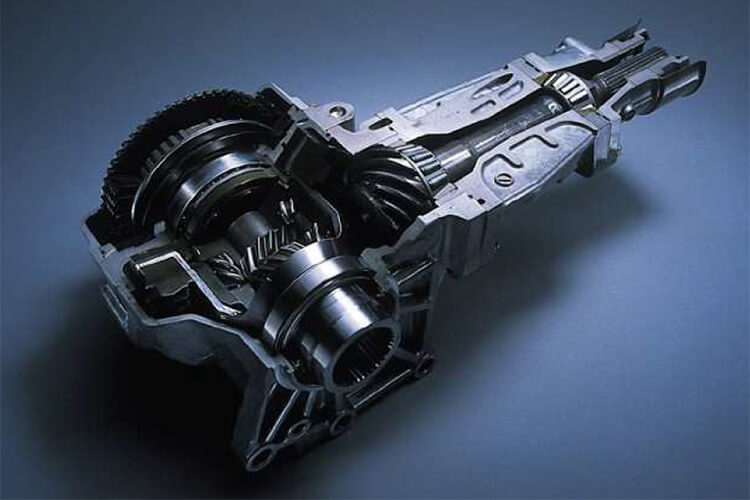
ACD as equipped on the Lancer Evolution VII
Then, as Nakaya had also advised that the technologies on the Lancer Evolution should be made available for use in motor sports, the Lancer Evolution VIII subsequently adopted Super AYC which delivered durability and reliability along with even better performance by increasing AYC’s torque transmission. Nakaya reflects, “We repeated the process of doing a basic tuning on the test course and then driving the circuit. On the circuit, we could rewrite the control program on the spot and check the effects on driving time. That made development much more efficient.” Development was done not just with pen and paper but on the actual race as well. This method was made possible through Nakaya, who drove the Lancer Evolution and achieved great results in Super Taikyu competitions. He also got a feel for the four-wheel control technology having matured. “Super AYC being able to stabilize the car when it feels like it’s about to spin and being able to control its cornering power with ease was a huge game-changer.” This method exemplifies Mitsubishi Motors' approach of leveraging motorsports as a development ground, feeding back the technologies cultivated there into its commercial vehicles.
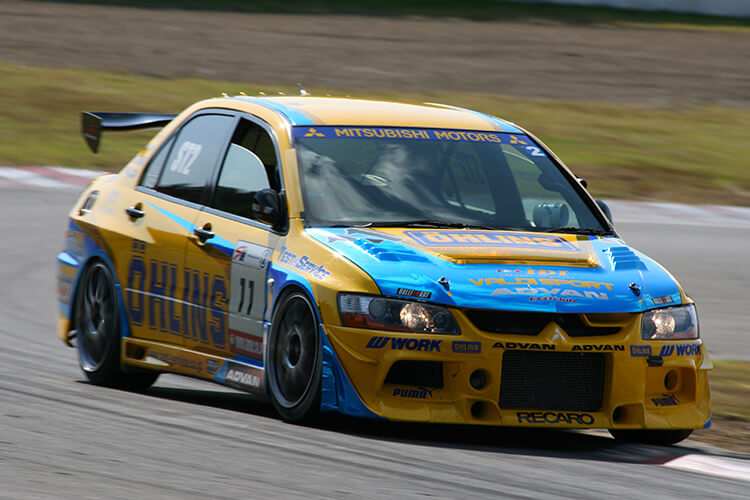
Lancer Evolution IX MR
accomplishes the spectacular feat of winning all races in the Super Taikyu 2007 round
Based on the concept of being an all-weather high-performance sports sedan, the Lancer Evolution X which became the final model in the series was equipped with S-AWC. This system integrated the frontrear driving force distribution control of ACD with the left-right driving force transfer control (torque vectoring) of Super AYC, braking control with an anti-lock braking system (ABS) and Active Stability Control (ASC), plus front wheel braking control through AYC. S-AWC was a culmination of Mitsubishi Motors four-wheel control technology that spanned decades. It became an S-AWC integrated vehicle dynamics control system that was truly like a dream. Since it can use both driving and braking force to control vehicle behavior at will when cornering and when accelerating, anyone can use it to comfortably enjoy a safe, reassuring ride on all types of surfaces.
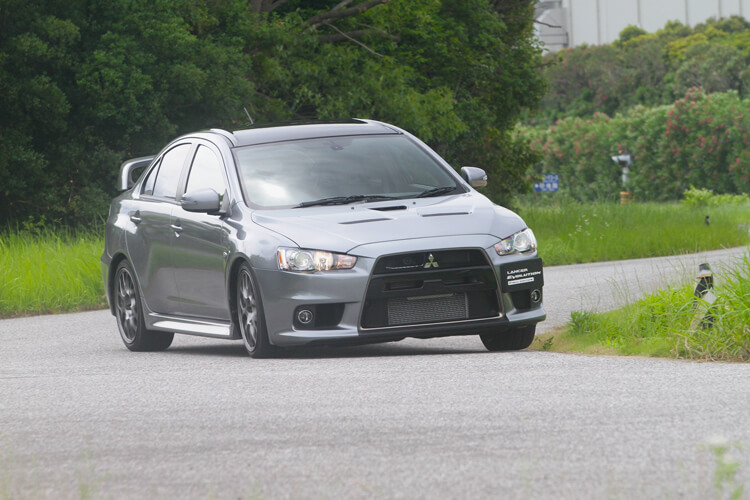
Nakaya drifting. The body clearly remains stable and balanced.
Eventually, lightweight and simple braking control-type AYC was born
Nakaya also has memories about braking control. Even bicycles can apply braking separately to the front and rear (the front and rear brakes each have different roles), but car brakes activate brakes on four wheels simultaneously with just one pedal. He apparently wondered whether brakes could be applied independently at least between the left and right wheels. “Increasing the turning force just by lightly pressing the brake inward toward the direction you want to turn is normal now, but back when it wasn’t even a thought, I tested out whether it could be used in a race. First, I added a mechanism to my RC car at home to make the brakes apply only on the inside when steering on corners. When I did a test run, it cornered really well despite being 4WD, so I had people from development check it out and look things over. I also installed a motorbike brake lever on the steering wheel of my race car and made modifications so the brakes would work separately on the left and right. Now it turns really well. But if I squeezed it a number of times, my hands would start to hurt (laughing).” That was when the idea that led to the current braking control type of AYC was conceived.
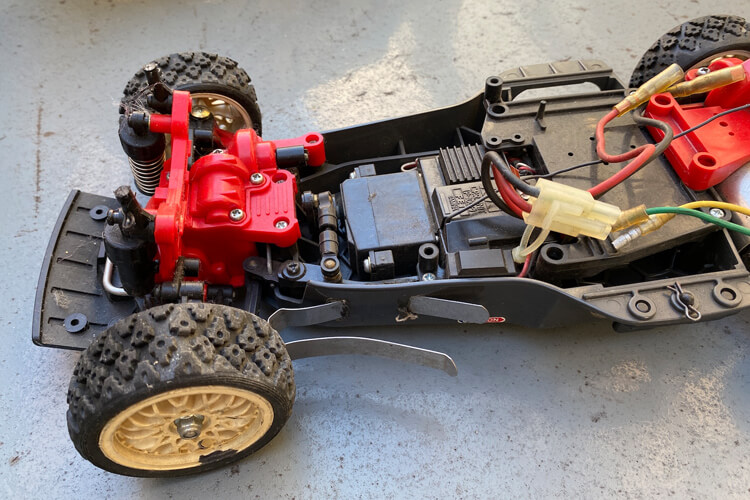
The RC car that Nakaya actually made. Brakes only apply to the wheels on the left side.
Twin motor 4WD x S-AWC: Made for each other
The S-AWC in the latest Outlander PHEV is a system that integrates driving force distribution through front and rear independent electric motors, with driving force control for the left and right wheels through AYC using braking control. Utilizing the excellent response of the electric motors made it possible to instantaneously change front and rear torque distribution with ease. Nakaya continues, “Controlling friction materials on parts such as the brakes and the clutch is extremely difficult, but the electric motors have excellent compatibility with S-AWC since they can be controlled with precision by computer. Since electric cars that can decelerate with regenerative braking put little strain on the brakes and hold steady with little effect from changes to braking force caused by heat, I think braking control-type AYC is a major selling point for the Outlander PHEV.”
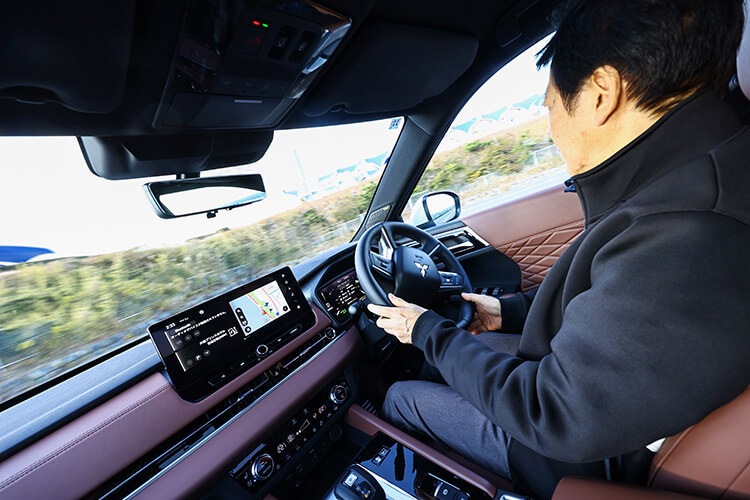
The braking control-type AYC on the Outlander PHEV. Nakaya also found it highly effective.
“All of the knowledge and dedication from experience in motor sports has gone into Mitsubishi Motors four-wheel control technology. The S-AWC in the Outlander PHEV is one of the resulting achievements, and within it also lies new potential for the next era.” Nakaya has been alongside Mitsubishi Motors four-wheel control technology on its path thus far, and he has big hopes for its future evolution.
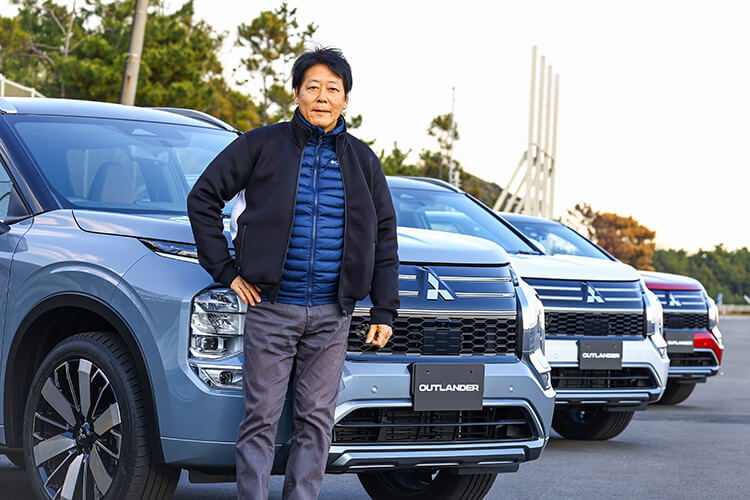
Nakaya took the new Outlander PHEV for a test drive and looks forward to the further evolution of S-AWC achieved through combining it with multiple electric motors.
[Akihiko Nakaya]
He has been active as a racer and journalist since his university days. In 1985 he turned into a professional racer and won the opening race of the Mirage Cup. That same year, he drove a Mitsubishi Starion in the first ever Inter TEC race, which featured bruising competition between Group A vehicles. In 1988, he was the All-Japan F3 champion. He provided his advice from the standpoint of a racing driver, supporting the development of Lancer Evolution models V through X from behind the scenes. Driving Lancer Evolution cars, he recorded 50 victories and five full-year championships in Japanese endurance races "Super Taikyu Series”.